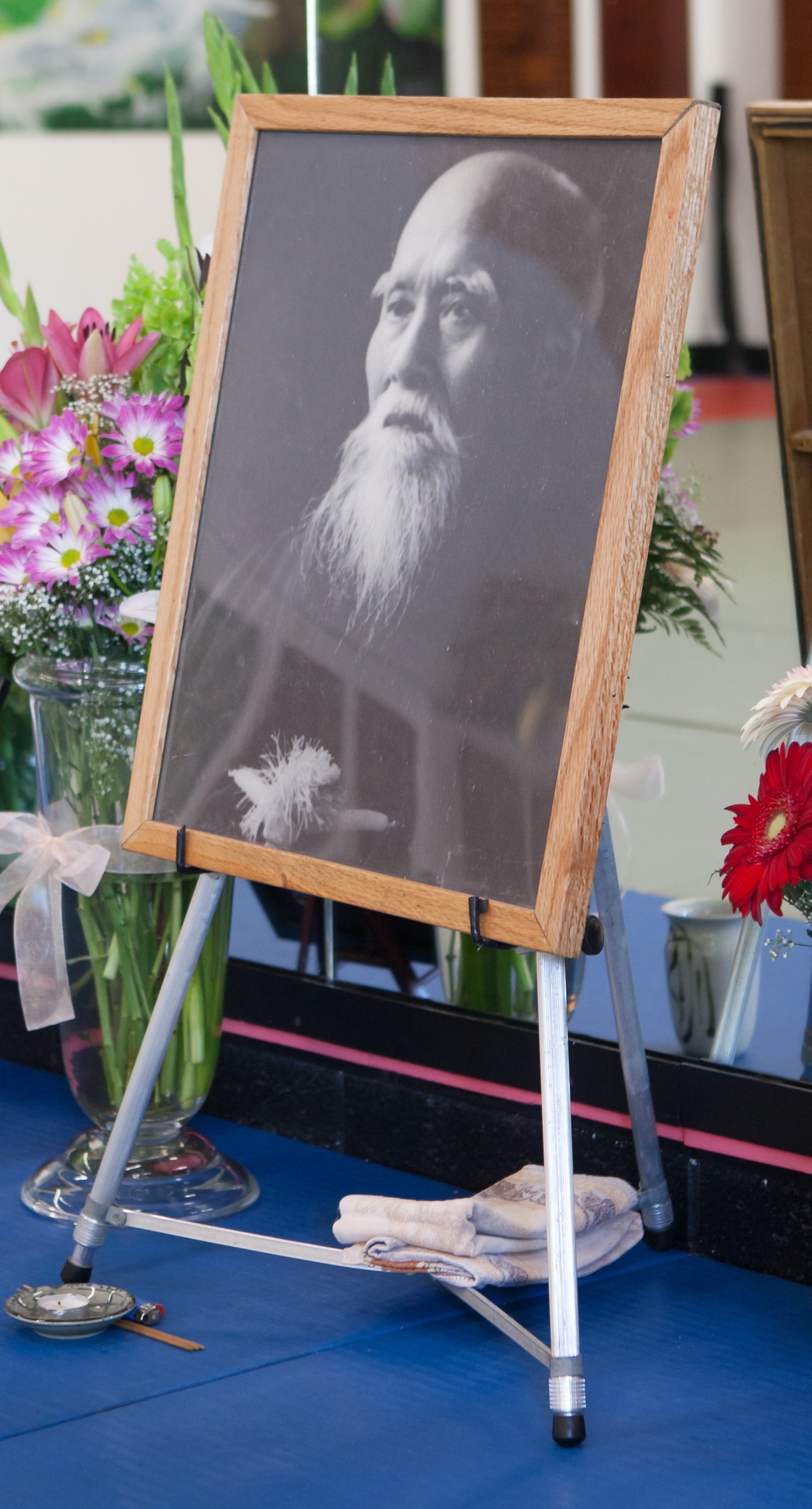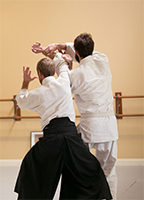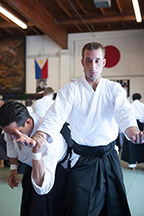The classic aikido stance, or hanmi, appears simple. As with just about everything else pertaining to this art, however, there’s more to it than just standing with your feet perpendicular to each other.
The stance we use in aikido comes from the bukiwaza (weapons technique) ken stance. Hanmi, balance, and movement all come from the bokken (wooden sword). For a beginner just picking up the bokken for the first time, this concept may not be self-evident. But swinging the bokken—with all its integration of movement with the hips—develops balance, power, coordination, and teaches us where to find our center.
The mechanics of the stance are as follows: Point your front foot straight ahead. Turn your rear foot until it is approximately perpendicular to the front foot. Align the ball of your front foot with the ball of your rear foot; this creates the triangular stance. Bend your knees. Your front knee should be in a straight vertical line with the toes of the front foot—in other words, do not bend your knee so far that it hangs past your toes. Your weight is evenly placed between both feet, as though your weight is going down from your center, between your feet, and into the ground.
Like so:

O’Sensei called this stance ushiro-sankaku (rear triangle). Your weight sits in this triangle, relaxed, centered. Drop your hips. Imagine a line going from the top of your head, down through your hara (center), hips, between your feet, and into the ground to the center of the earth. If you can achieve this mental state, your body will be immovable.
Another tip that will help your technique is to make sure that your center is pointed at your partner’s center. This means that if your partner is standing at 12:00 from you, then your center should be pointing to 12:00. Your hips will naturally follow.
Waza movements, which seem so natural once you learn them, may cause a beginning aikido student to feel some initial frustration. There is so much to remember—triangle stance, bend knees, drop hips, center-to-center, keep extension, relax—and this is even before you begin the movements that make up the technique.
That beginner may feel as if he has suddenly lost all coordination when attempting morotedori-kokyuho. His extension collapses. He loses the connection with his partner. He forgets to drop his hips. And he never reaches that point of feeling the effortless, morotedori-kokyuho “wheel” sensation, where uke drops to the mat as if by magic.
A common reaction for a beginner in this state is to lose contact with his stance. Like a child who is first learning to walk, he may shift weight onto his toes as his body tenses. As we know from watching a toddler take those first tentative steps, there is a lot of stumbling, balance lost, falling. So even though moving up on your toes seems to be an instinctive reaction, it is exactly the wrong reaction. You will need to develop new instincts.
An exercise that may help break a student of this inherent instinct—as an intermediatesolution—is to settle your weight back on your heels. Don’t actually raise your toes, but think of shifting your weight back from your toes to your heels. Practice moving like this. You should almost immediately feel your weight sinking, your hips dropping, your self more in touch with the ground.
Ultimately, you are aiming to have your weight evenly distributed over the entire surface of your feet, which should be flat on the ground. But the heel exercise can help get you off your toes, and hook you into your stance. Once you begin to get the idea of what it feels like to be grounded, work on spreading your weight out over your entire foot.
A beginning aikidoka, if he practices regularly, may find with just a few weeks of training that he is walking differently. This can be a joyful discovery. He feels closer and more connected to the ground. He moves as if gliding, the steps coming from his hips rather than the legs or feet. Suddenly he is not so easy to put down when he is acting as uke during taijutsu. And he will find that he is performing his own waza better.
For anyone who has trained aikido for any length of time, you know that if you mess up right at the beginning of a technique, it is unlikely you will salvage the rest of the technique. Aikido waza—much like the Japanese language—is made of basic parts that fit together to make a greater whole. Your hanmi is about as basic as it gets. If your stance is incorrect, you probably won’t get very good results in your technique. Perfect this most basic of concepts, and the rest of your practice will start to flow.
 1. Aikido decides life and death in a single strike, so students must carefully follow the instructor’s teaching and not compete to see who is the strongest.
1. Aikido decides life and death in a single strike, so students must carefully follow the instructor’s teaching and not compete to see who is the strongest.


